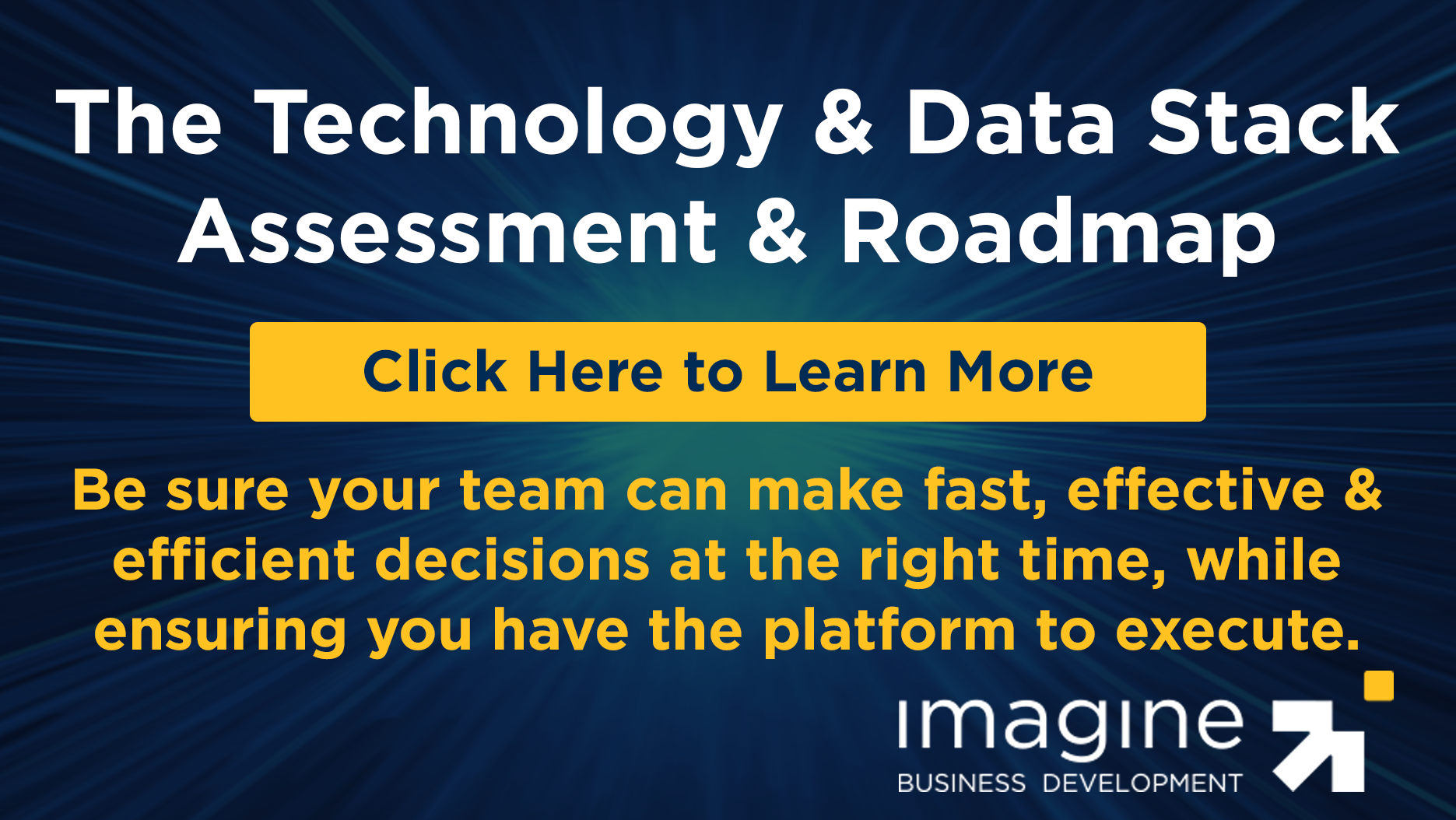 If you’re at all like me the mere thought of running two CRMs simultaneously makes about as much sense as running Windows on a Mac. I have to admit that there’s a part of me that’s a bit shocked at myself for writing this post.
If you’re at all like me the mere thought of running two CRMs simultaneously makes about as much sense as running Windows on a Mac. I have to admit that there’s a part of me that’s a bit shocked at myself for writing this post.
The central reason against running two CRMs is that it requires maintaining (and synchronizing) two different databases, which inherently increases the complexity and friction associated with managing your operations. Yet today, if you’re running Salesforce, the likelihood is that you are also running at least a marketing automation system along with it. If that’s the case you’re running a two-database solution anyways, even if it’s Pardot, which is owned by Salesforce.
When you realize this, the “duplicate” CRM issue can be viewed very differently.
Salesforce and HubSpot are great CRMs when they’re used for the primary purpose they were designed for. They’re average when you use them outside of their core design. What’s more, the strengths of Salesforce match up to HubSpot CRM’s weaknesses, and vice versa. When I advise clients on their tech stack, I often joke that the perfect CRM for them is one part Salesforce and one part HubSpot CRM.
Increasingly, as we’ve been building out more automation systems to address issues around sales rep productivity, I find myself pondering this solution seriously. Let’s take a look at why this combination may, in fact, solve the sales productivity riddle that has plagued sales teams for more than 30 years.
The Power That Is Salesforce
Salesforce is, unequivocally, the leading CRM for growth-focused enterprises and mid-market companies serious about high-velocity growth. It’s an extraordinarily powerful system, but it is far from perfect. To understand the rationale for a dual-CRM strategy, you must understand the strengths & weaknesses of Salesforce.
- Salesforce Strengths
- Stability.
- Reporting & Oversight.
- Highly customizable to fit whatever needs, situations and/or rules are needed for the sales organization.
- Strong on mobile.
- Truly a platform. Salesforce is built to be your single system of record.
- Salesforce Weaknesses
- It’s complex and often “heavy.” Salesforce is an extraordinarily powerful tool, but in many cases, it’s too powerful. It over-solves for the problem being addressed, or in the words of an early coach of mine, “It’s like shooting a bunny rabbit with a shotgun.”
- If you’re utilizing marketing automation, you cannot operate with a single database.
- To fully utilize capabilities, you need to customize setup.
- It’s not designed for the salesperson.
- You will need to utilize point solutions to make it fully functional.
- It’s (really) expensive.
The Velocity of HubSpot CRM
HubSpot, of course, started as a tool for marketers. Over the last four years, they’ve been steadily increasing their investments and product development to address the sales side of the equation (and this year they’ve added a Services Hub as well).
HubSpot’s CRM was not initially created with the enterprise in mind. Instead, it was built for the sales rep. It was designed to be simple, intuitive and easy to set up and use. Their goal was to help take burdens off of the salesperson and, in the words of co-founder and CEO Brian Halligan, "To make things easy for the seller and easy for the buyer."
They succeeded in that effort. Over the last two years, primarily through the enhancements to their Sales Pro & Enterprise products (I’ll be reviewing their new Enterprise product fully next week), they have built the capabilities of the CRM to meet the core needs of much larger organizations (although they're still not fully getting the credit they deserve).
A quick breakdown of the strengths and weaknesses of the HubSpot’s CRM:
- HubSpot CRM Strengths
- When used with HubSpot’s Sales products, it is a total salesperson solution.
- It’s easy to set up and use with very little training needed to fully utilize.
- It’s fast.
- It's a single database for sales, marketing and service.
- It’s platform light.
- It scales to the user.
- It’s free…well, it’s not really free if you’re looking to use it in the manner I share here. You will need to pay for Sales Pro or Enterprise. But - and it’s a BIG but - you only pay for the users who use the powerful sales acceleration features. This means that everyone - every single one - in your organization can have individual access to the CRM for zero. While this sometimes doesn’t sound like much, it’s actually quite significant when you’re looking to drive the productivity and velocity of your revenue team.
- HubSpot CRM Weaknesses
- The rules and provisioning available to users are limited.
- Cross-object reporting and utilization are weak (though they have introduced cross-object reporting in their new Enterprise product).
- Weak mobile app.
- HubSpot integrations & APIs are not sufficient to serve as a legitimate single system of record.
The Two-CRM Solution - The Best of Both Worlds
I’ve been involved in salesforce automation for more than thirty years. I go back to the days of ACT! for DOS. I’ve seen them all, and I’ve never found one CRM that everyone (C-suite & sales executives and sales reps) really likes.
To be clear, I am aware of some Salesforce implementations that everyone loves, but they all required seven-figure investments in configurations, integrations and customizations, plus a team of 2 - 5 people whose full-time job is to administer the system. If you’re in a position to make such an investment (and you feel that type of investment is a worthy one), you should stop reading this post. (Sorry, I probably should have told you this earlier). If not, keep reading.
The problem is that the needs of the organization and the needs of the sales rep don’t always align. This gap is filled with conflicts and trade-offs, making it virtually impossible (or extraordinarily expensive) for a software company to satisfy both constituencies.
When I advise companies on their salesforce automation strategy, my focus has always been to enable them to map out their priorities, so that they could make the trade-offs necessary to choose the CRM that would be the best one.
I’ve stopped doing that. The complexities of the modern tech stack have eliminated the benefits of one. Today HubSpot is the only tool that enables a company to fully implement a modern-day demand generation, sales and customer success program using one database (which is the primary - maybe exclusive - reason that one system is better than two).
While the HubSpot system enables you to operate with a single database, it’s still not the perfect solution. It’s not (yet) powerful or stable enough to serve more complex use cases. Plus, if you’ve installed Salesforce, integrated it into your ERP (and more) and it’s serving as your single system of record, the switching costs and risk to change is simply too big to be reasonable.
And then, just like taking a bite out of a Reese’s Peanut Butter Cup, you realize you don’t have to choose between the chocolate of serving the organizational & executive needs and the peanut butter of serving the sales reps needs. You can have both.

 Doug Davidoff
Doug Davidoff